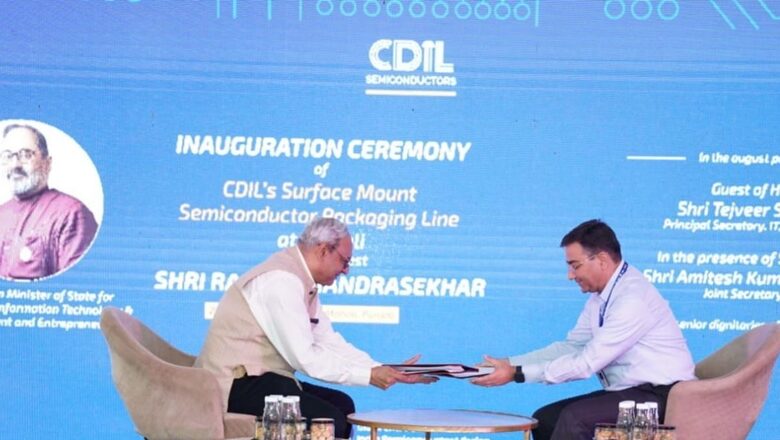
views
Continental Device India Pvt. Ltd. (CDIL), which has been a leading semiconductor company in India since 1964, has become the first Indian company to begin production of Silicon Carbide (SiC) components.
In a virtual ceremony, Union Minister of State for Electronics and Information Technology, Rajeev Chandrasekhar, inaugurated CDIL’s new Surface Mount Semiconductor Packaging Line at its Mohali plant.
This expansion equips CDIL to produce auto-grade SiC devices, including SiC MOSFETs, Schottky Diodes, Rectifiers, Zeners, and TVS Diodes, to cater to both domestic and global markets. The expansion of the assembly lines will raise the facility’s total annual capacity to 600 million units.
CDIL’s pilot production of SiC devices started in August, with the company already delivering its first batch to customers in domestic and international markets. With 59 years of legacy and a global customer base including in China, Japan, Hong Kong, Russia and the US, CDIL is poised to play a crucial role in India’s semiconductor industry as it embraces SiC technology and expands its manufacturing capabilities.
SiC devices are semiconductor devices made from the compound material silicon carbide. SiC has a number of advantages over traditional silicon semiconductors for power electronics applications, including:
• Higher breakdown voltage: SiC devices can withstand higher voltages than silicon devices, allowing them to be used in high-power applications.
• Faster switching speeds: SiC devices can switch on and off faster than silicon devices, which reduces switching losses and improves system efficiency.
• Lower on-resistance: SiC devices have lower on-resistance than silicon devices, which further reduces power losses and improves efficiency.
• Higher operating temperature: SiC devices can operate at higher temperatures than silicon devices, which allows them to be used in harsh environments.
SiC devices are being used in a growing range of applications, including:
• Electric vehicles: SiC devices are used in electric vehicles to improve the efficiency of the powertrain and reduce the size and weight of the vehicle.
• Solar inverters: SiC devices are used in solar inverters to improve the efficiency of the system and reduce the cost of solar energy.
• Industrial motor drives: SiC devices are used in industrial motor drives to improve the efficiency and performance of motors.
• Data centre power supplies: SiC devices are used in data centre power supplies to improve the efficiency of the power supply and reduce energy costs.
However, other applications for SiC devices include aerospace and defence, medical devices, telecommunications and smart grid.
CDIL’s efforts in packaging discrete semiconductor devices have been praised, and there are hopes for CDIL to consider establishing a discrete fab in the country in the future. An MoU has been signed between CDIL and the Semi-Conductor Laboratory (SCL) to strengthen indigenous chip manufacturing and packaging in India. CDIL has also set up a state-of-the-art testing and reliability laboratory at its Mohali plant, ensuring that its semiconductor products meet the stringent standards stipulated by the Automotive Electronics Council (AEC).
However, speaking at the launch, Amitesh Kumar Sinha, Joint Secretary at MeitY, stressed India’s focus on the semiconductor sector, which is projected to see a demand surge of around $110 billion by 2030. He said: “At MeitY, our objective is to modernise and commercialise SCL with the focus on making it an R&D hub for developing the semiconductor ecosystem in the country. It’s heartening to see CDIL taking the lead in the Packaging of discrete semiconductor devices. CDIL has the capability for R&D, Design, and Packaging. Earlier, they also had a fabrication facility. I hope CDIL will also consider setting up a discrete fab in the country by availing financial support under the Semicon India programme in future. As CDIL and SCL join hands for knowledge exchange, India can look forward to more indigenous chip manufacturing and packaging for India and the world in the upcoming future.”


















Comments
0 comment